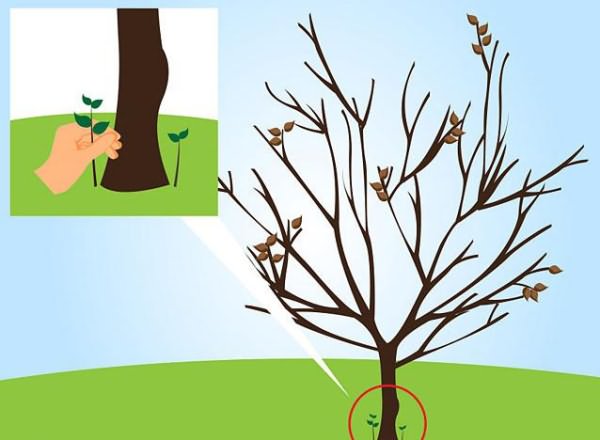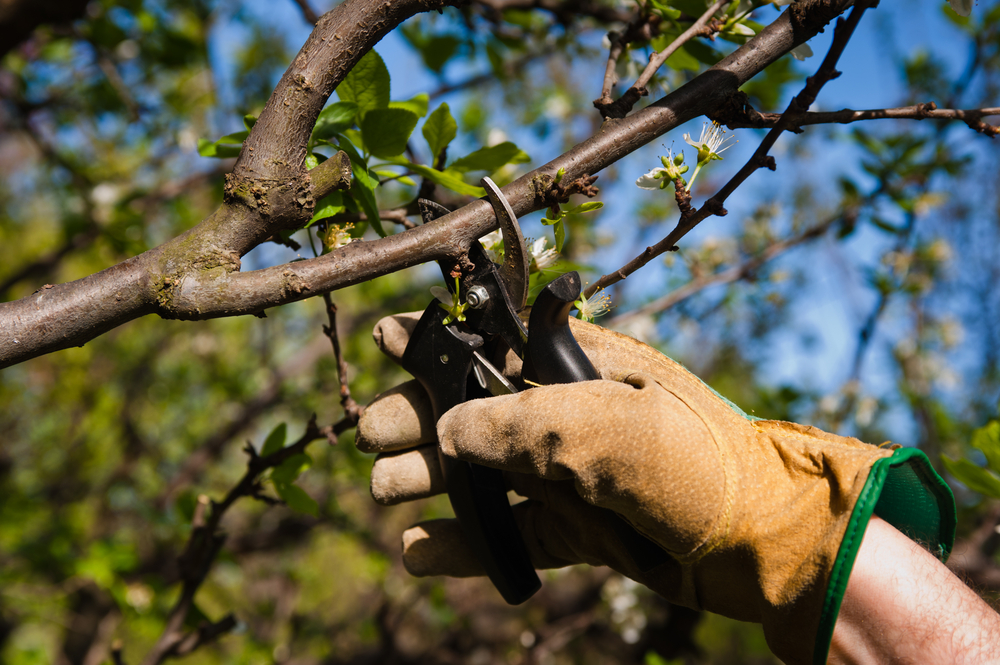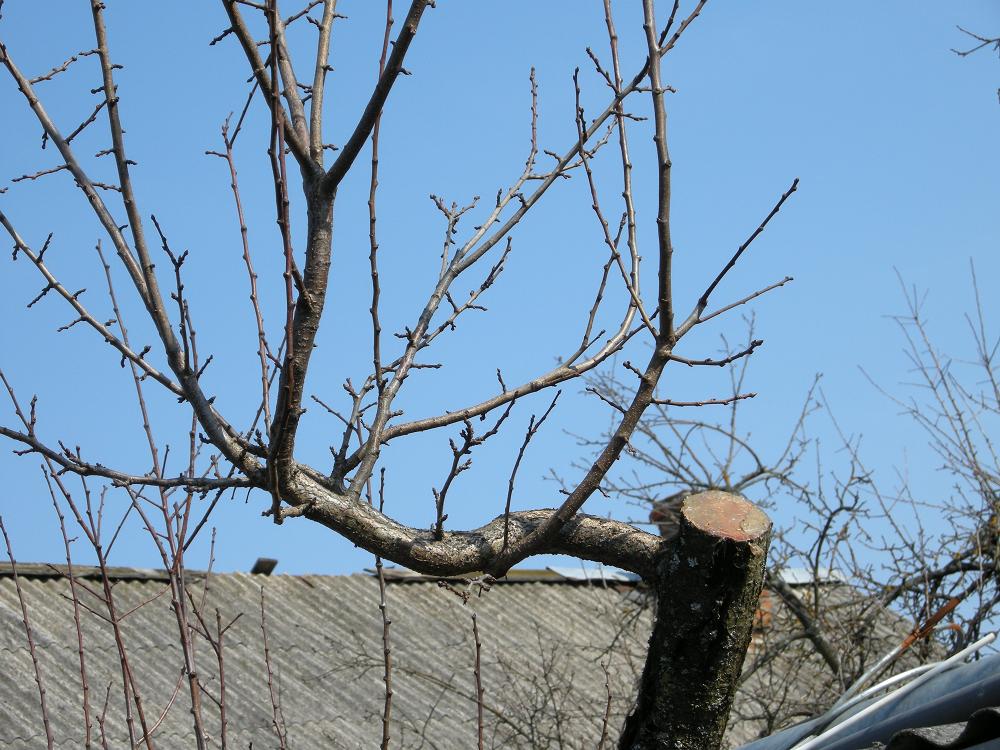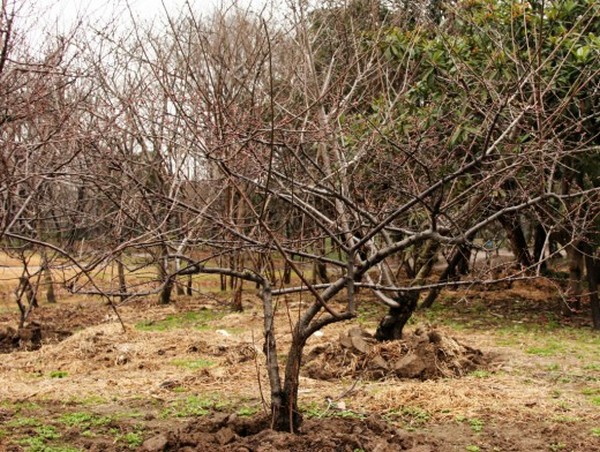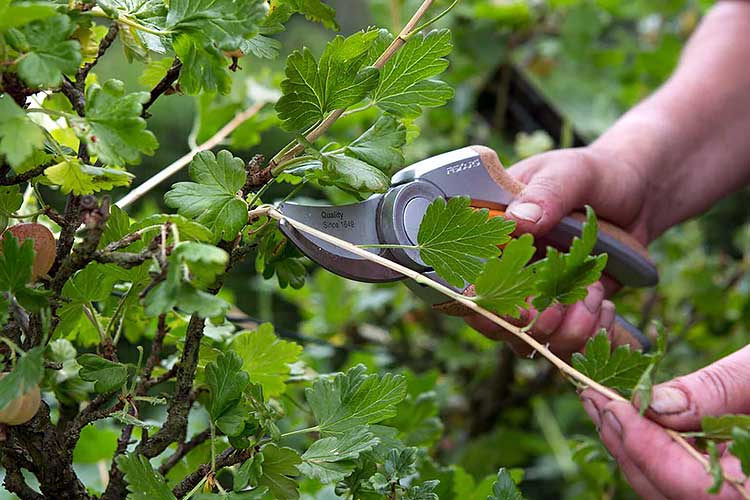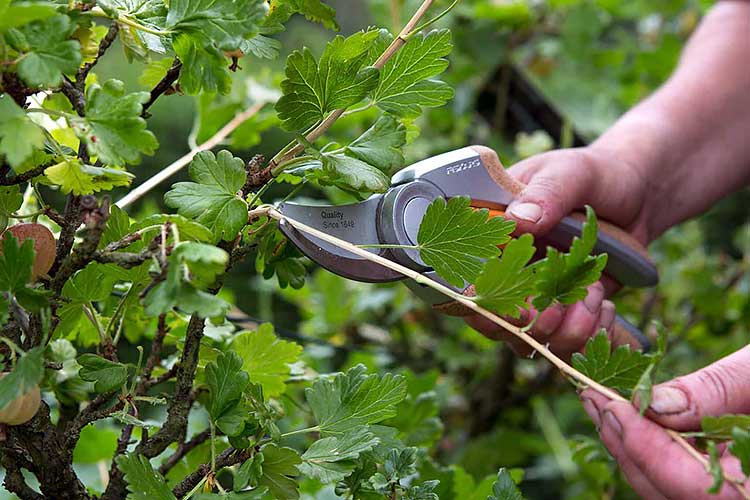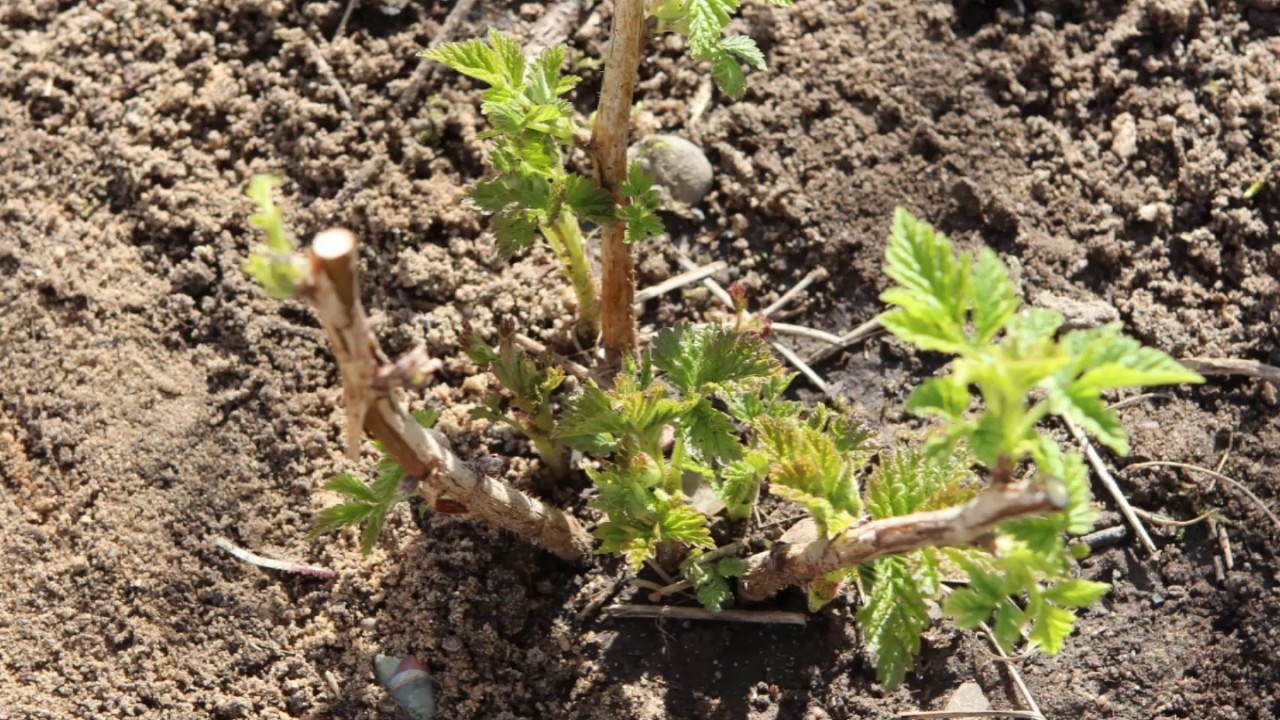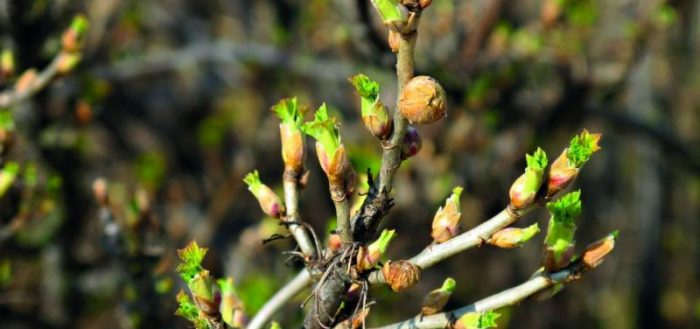Content:
Novice gardeners are constantly asking the logical question of how and when to properly prune cherries. The latter believe that pruning the branches of a cherry tree negatively affects the condition of the plant and because of this, yields are reduced. Experienced gardeners do not see anything wrong with cutting felt cherries, because this procedure, in their opinion, is important for the fruit tree.
Basic information about culture
Cherry belongs to the Plum genus. The height of a young tree rarely exceeds 3 m. The crown is dense, reminiscent of an oval. In garden plots, it occurs in the form of a bush with branching branches.
In the world there are a considerable number of types of these fruits (over 100).
Twigs are located on the branches (skeletal) forming a cherry tree. The leaf resembles an oval, rounded at the end. In size, it reaches at least 3-5 cm. In autumn, the leaves acquire a different color: they turn red or orange. White flowers have five petals. The size is 2 cm. They grow in inflorescences. The cherry shade varies between black, red and light pink.
Some cherry varieties are unable to pollinate themselves. Even if there are many flowers on the tree in the spring, the yield will not be high. It is imperative to plant a pollinator tree next to the cherry plant.
Varieties
There are several varieties of cherries (early, medium and late) in the world. Among them, the most popular:
Early:
- Crimson;
- Vladimirskaya;
- Bulatnikovskaya.
Average:
- Zagoryevskaya;
- Cinderella;
- Anthracite;
- Surprise.
Late:
- Lyubskaya;
- Ruby;
- Lotovaya;
- Shakorivskaya.
The cherry fruits contain useful trace elements: tannins, sugars, vitamins (chromium, iodine, iron, molybdenum, cobalt, phosphorus), and the pulp contains coumarin, which is responsible for clotting, ellagic acid, anthocyanins, folic acid.
The fruits of the plant are used in the following cases:
- for the treatment of dysentery;
- to increase sugar;
- to relieve the condition during gout;
- reduce blood pressure indicators;
- eliminate the risk of thrombosis, stroke;
- lower body temperature;
- prevent some diseases (heart attack, atherosclerosis, angina pectoris);
- stop bleeding (for this, cherry tea is brewed from the leaves).
In case of diabetes mellitus or diseases associated with the digestive system, the use of cherries is contraindicated.
A variety of dishes are prepared from red fruits (compotes, liqueurs, jam). Cherries are used to treat edema (diuretic effect), restore salt metabolism, remove toxins and toxins (laxative).
Cherry pruning: when and how to do it right
If a person has recently been fond of gardening (including growing cherries), you should carefully study the features of the bush plant and the procedures that are needed for a good harvest and strengthening the tree. It is more recommended to understand how cherry pruning should be carried out in spring.
Many people know that cherry is an early ripening fruit plant. Because of this, she is so often found in gardens.However, this feature is not considered an advantage. The fact is that, due to early maturity, the plant experiences thinning, aging and loss of yield earlier than others. And in order to prevent this, a person should carry out pruning. The following will tell you how to properly trim the cherry and how to shape the crown.
Benefits of the procedure:
- crown formation;
- increased fertility;
- an increase in the size and taste of the fruit;
- reducing the risk of disease by cutting off old branches;
- suspension of the aging process.
After understanding the need for this procedure, a person should learn how to prune cherries in spring, autumn or summer. Before proceeding with the direct pruning, you need to carefully study all its features.
Spring pruning is carried out at a time when the buds have not yet begun to bloom. If the winter cold has negatively affected the tree (branches are damaged), then it is impossible to prune the branches immediately after frost. Frozen shoots are cut off when the first buds appear. The procedure is carried out in March (at the end of the month) or in April. If it's too cold at this time, it's okay, you can wait until it gets warmer.
If you find diseased shoots, you need to trim the tree carefully. This is done in order not to harm the plant and not infect with diseases. Together with the sick, it is necessary to remove the growing branches nearby, which confuse and thicken the cherry. If the shoots are young (1-2 years old, about 35 cm), do not touch them. The main pruning is spring. It is needed in order to form the correct shape of the cherry crown. During the procedure, gardeners often work in steps, following a diagram.
Pruning branches in the spring improves the condition of the cherry after the winter cold. Carrying out the same preventive procedure in the fall (around the end of September), a person helps the tree to prepare for winter.
People living in the southern regions (for example, in the Urals) prune only when the leaves fall. During this time, they remove shoots that interfere with normal development and thicken the cherry. To protect the tree from diseases, you need to cut off branches infected with any disease.
It is recommended to apply garden varnish or paint to the cut site. To get a large and tasty harvest from a tree, you need to prune branches once every 2-4 years. You should not carry out the procedure for pruning plantings before the onset of severe cold weather. This negatively affects the plant, reducing its ability to withstand frost and weakening its protective functions.
Many beginners are wondering how to shape a cherry crown. Experienced gardeners believe this should be done during winter and on older trees. In winter, there is less chance of damage to the bark than at other times of the year. As after spring pruning, it is advised to apply paint or var to the cut site. If the cold is too strong, then it is better to postpone the procedure until better times. By pruning tree branches in frost, a person risks damaging the plant.
Inadvertent pruning of cherries in summer can result in the cuts taking too long. In addition, untimely processing negatively affects the condition of the tree as a whole: fruiting stops, yield decreases. Therefore, it is not necessary to carry out summer pruning like in spring. You can slightly correct the shape of the crown, but no more.
How to prune branches
Before you start pruning, you need to know how old the tree is. You also need to check the condition of the instruments. If they are old and stupid, then you cannot use them, since you can easily harm the cherry.
Young tree
Novice gardeners should remember that you can prune cherries for the first time a few days after they have been planted. Thanks to this, a beautiful and desired shape is formed. In addition, such a procedure helps to quickly get used to the new land.
It is recommended to prune branches before the buds swell. In this case, you need to leave a few strong ones for further development and fruiting. They should not be directed to one side and be located close to each other (less than 9 cm).
Unnecessary branches should be pruned. Sections are processed with special tools. For several months it is advised to monitor the condition of the crown (density and correct development). When branches appear pointing inward, they are cut off.
It is necessary to prune a young tree with the utmost care, because inaccurate actions often lead to a sharp decrease in fruiting in the future.
Old tree
If a novice gardener got a plot with an old cherry from the previous owners, then it is better to immediately study the complete information on how to prune such a tree. Thanks to this procedure, an adult tree is rejuvenated, and fruiting increases.
Some branches are removed completely, while others are simply shortened or cut completely. The kidneys must not be touched. Growths that appeared 1-1.5 years ago are not recommended to be cut.
Before rejuvenating the tree, skeletal branches are exposed and wait for the moment when the growth length will be slightly less than 13 cm.
Typical diseases
The cherry tree often suffers from pests and various diseases. This is mainly due to the constant rains in the summer. And here are some of them:
- scab;
- coccomycosis;
- perforated spotting;
- monoliosis;
- anthracnose.
There are also a lot of cherry pests. The most dangerous are aphids and weevils. To get rid of the first insect that appears mainly on a wet plant, use bi-58, decis, and periodically pull out the shoots and weeds around the affected tree. To get rid of a weevil that damages the ovaries and kidneys, use metaphos or artelik. It is also recommended to dig up the ground near the trunk.
Care
Caring for the tree consists in regular watering, timely pruning, loosening the earth, and top dressing.
After planting a cherry tree, you need to water it periodically. At first every day, later (with the appearance of buds, shoots) less often (once every 7-14 days). During the hot season, it is especially important to monitor watering so that the cherries do not dry out from dehydration. A mature tree requires a lot of water (up to 8 buckets).
They loosen the soil when the snow melts and the earth dries up. Thanks to this, the plant warms up, more oxygen enters the roots, moisture evaporates more slowly. Loosening should be carried out until July). Do not dig too deep when performing this procedure. In the autumn, it is recommended to dig up the soil to eliminate harmful beetles.
After the snow disappears and the grass appears, you should closely monitor the appearance of weeds and pluck them at the first detection. The shoots suck out useful components from the ground, thereby leaving the cherry itself without nutrition. To protect a young tree, it is recommended to plant legumes and salads next to it for the first 5 years.
It is not necessary to feed young plantings during the first year. You will have to fertilize in the second year. For this, gardeners use ash (wood), manure, superphosphate (in the autumn), mullein. In the store, a novice gardener is often advised to purchase dry fertilizers, and this is really convenient. Everything is detailed in the instructions.For feeding, ready-made fertilizers on a mineral basis are most often used.
That's all there is to it in a nutshell about cherries and their spring pruning. But even this is enough to get an idea of tree care and prepare for growing. The main thing is to follow the advice and recommendations above, and you will succeed!
